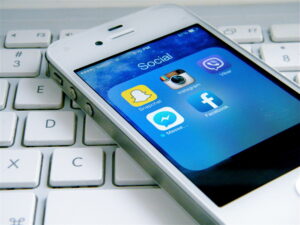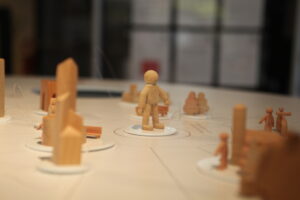Networking Using Social Media
In light of the COVID-19 pandemic, the world has faced many economic and social changes. As a result, the importance of Personal Learning Networks (PLN) have been recognized for their ability to share knowledge and experience with a group of connected people – physical barriers do not come into play here.
But how can we define a PLN? As defined by Jane Hart – “It is a network of trusted connections with whom an individual interacts (and learns from) on a regular basis” (Gutierrez, para 1)
We all regularly interact with a network of our preferred people, digital devices, information sources and services (both online and offline). We use this network in different contexts depending on out day-to-day lives. The skills at the center of networking involve an ability to identify and understand other people’s work in relation to one’s own. Upon building this network, content is distributed across different groups and places where people can gain access to information at ease (Rajagopal et al, para 2) . PLN’s are developed largely via social media platforms (such as Twitter, Facebook, Linked and Instagram) while helping its users to form connections and grow their knowledge base by developing themselves professionally through continual learning.

(“Social Media” by magicatwork is licensed under CC BY 2.0 )
Why Should You Build a PLN?
PLN’s support the development and growth of professionals’ careers. Once created, the PLN would be a platform in which dialogue and conversations can occur, thus allowing for individual (non-formal) learning. This learning is prevalent in practice since knowledge is built through experience and reflection and shared through social interactions with other users on the network (Rajagopal et al, para 3). This also allows for active collaboration for knowledge creation and knowledge sharing purposes. At some instances, these connections build strong ties where an individual can create and orchestrate these ties to orchestrate effective support for his/her learning needs. COVID-19 has left us with the need to build relationships through technology – a PLN is the ideal solution.

(“Social Media Week Milano :: Il Festival della rete” by br1dotcom is licensed under CC BY 2.0 )
The Risks That Come With it
PLN’s are subject to privacy concerns since our data is increasingly networked. Any model of privacy that focuses on the control of information will fail (Boyd, 2) . This is because it requires an individual to have the certain knowledge and skills to truly control their information, and since the internet is ever-changing, it is impossible to achieve control . One slip-up or a data leakage can cause protected data to easily enter into a networked public where it may enter broader databases, thereby circulating the information we intend to protect (Boyd, 2).
Networking has tremendous benefits – but we are all at the mercy of our data servers. It is important that we filter out sensitive data and learn how to validate sites and other aspects of the internet that we face on a day to day basis.
References :
Gutierrez, Karla. What Are Personal Learning Networks?, 21 June 2016, www.shiftelearning.com/blog/personal-learning-networks
Rajagopal, Kamakshi, et al. “View of Understanding Personal Learning Networks: Their Structure, Content and the Networking Skills Needed to Optimally Use Them: First Monday,” 27 Aug. 2011, firstmonday.org/ojs/index.php/fm/article/view/3559/3131.
Boyd, Danah. “Networked Privacy.” Surveillance & Society, 12 Dec. 2012, ojs.library.queensu.ca/index.php/surveillance-and-society/article/view/networked.


Great layout for your blog.
Thank you!